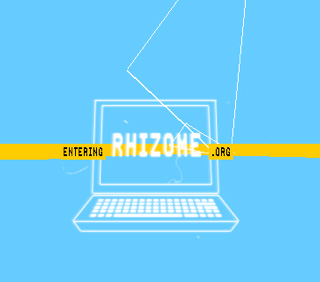Splash art originated in the 1940s in comics, where the term referred to a full page of visuals at the front of a book. Pages were designed to engage the reader's imagination along the lines of the comic's broader concept, while standing independent from the narrative. In the late 1990s, when the widespread use of the application Flash opened up new possibilities for animation and interactive media, the idea of the splash page migrated to web design. Online splash art brought visual excitement to a webpage when low modem speeds made it impractical to post large or moving images amid a site's textual content.
Rhizome introduced splash pages to its web site in 1998 in order to display artwork with greater immediacy....
Rhizome introduced splash pages to its web site in 1998 in order to display artwork with greater immediacy....
Launch Project 
 Untitled, ca. 2001
Untitled, ca. 2001
About
An elaborate black-and-white animation spins as it emits a low hum, like the beacon of a lighthouse. Click on the red "enter" button, and the screen shifts to a yellow and blue graphic that announces "Entering Rhizome.org." ItŐs a superfluous image, adding another delay to the user's access of the site, but it illustrates the splash page's role as a site of transition. Nettmedia, the defunct web design bureau that contributed this splash page, was close to the net art community; other projects included the design of the Bitstreams exhibition for the Whitney Museum in 2001.